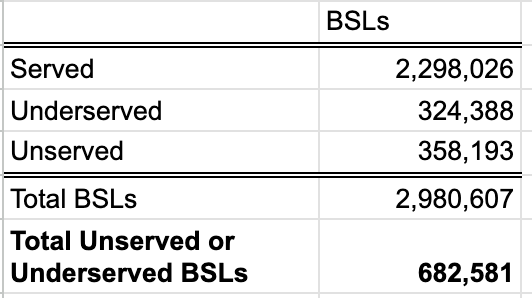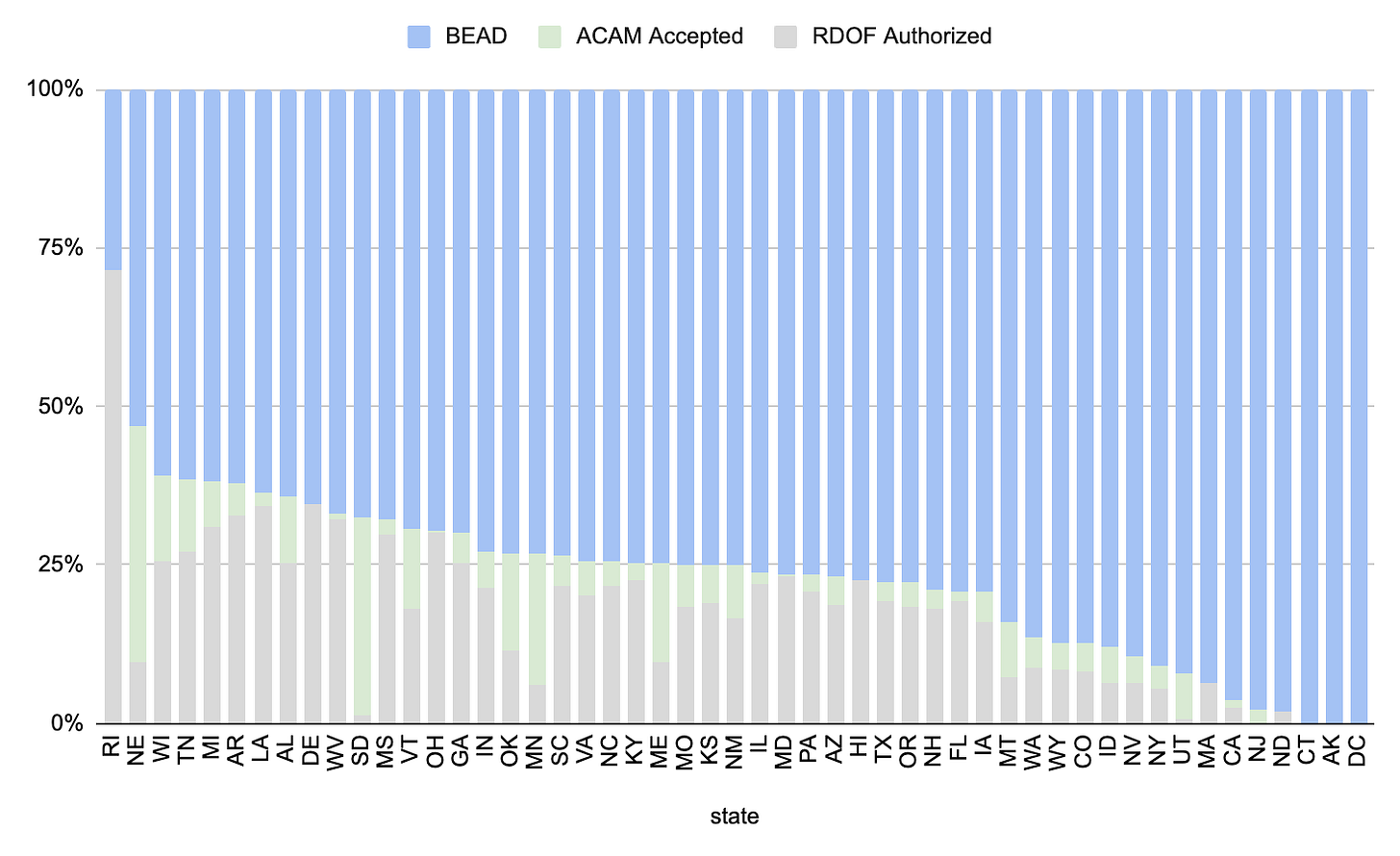Final Enhanced ACAM numbers are in: 683,000 locations off the board for BEAD
Small rural ISPs had until the end of September to tell the FCC whether they wanted to participate in the Enhanced ACAM program. As a reminder, the E-ACAM program extends subsidies to these small providers through 2038, and in exchange the providers will serve all locations in their territory with 100/20 broadband, making most of them ineligible for the BEAD program. The results are in: providers electing to participate in E-ACAM cover 682,581 Unserved and Underserved locations nationally.
I thought it would be way higher. My previous post showed that 1.3 million Unserved and Underserved locations would receive E-ACAM offers by the FCC. The accepted E-ACAM offers cover 52.5% of the Unserved and Underserved locations that were made offers. (The FCC had a participation threshold: if 50% of the current ACAM recipients didn’t accept the offer, they’d call the whole thing off. It wasn’t quite as close as it seems: 71% of Un/Underserved locations that were part of the ACAM program accepted. Only 14% of the Un/Unserved locations that are part of the Broadband Loop Support (BLS) program accepted.)
How does this affect states and their BEAD programs? Well, it’s still a big change in some states like Nebraska, where 47% of Unserved and Underserved are part of either RDOF or E-ACAM. And it makes a big difference in South Dakota, where 31% of their locations will be covered by E-ACAM. But it isn’t the sea change I expected.
Zero offers were accepted by North Dakota providers. Instead of having 80% of their locations covered by the E-ACAM program, they’ll have to rely almost entirely on the BEAD program to close their digital divide.
I can only speculate on why the acceptance is lower than (I) anticipated. I believe some of the subsidy offers were lower than what the company currently receives. Maybe the provider didn’t think the subsidy level was big enough. Maybe the provider wants to try their luck in the BEAD program. Or maybe the changes to the program made them somehow uncomfortable. I’m not sure.
I looked at one provider — Union River in Hancock County, Maine. Union River has brought fiber-to-the-home to most of their remote footprint. There are a small number of remaining Unserved locations around a lake that they’d be required to serve. These homes likely don’t have power. Union River didn’t accept the E-ACAM offer, leaving almost $1.4 million per year from the FCC on the table. I’m sure they have a reason.
There’s one other potential outcome to keep in mind: E-ACAM providers are required to serve all their locations with 100/20 broadband, but they can use any technology. If a provider served their locations with unlicensed fixed wireless, they would still be eligible for BEAD. I think that will be a rare outcome, but it could happen. My understanding is the FCC is collecting the planned technology from the providers so hopefully at some point we’ll know the technology each E-ACAM provider intends to use.




Great article. The FCC failed to update the cost model with current costs in order to stay within the predetermined E-ACAM budget. Without addressing the inflationary costs, the model absolutely underestimated the cost to deploy 100/20M to all locations. Also, some individual locations can cost $100,000 or more to serve which makes a model unreliable. The FCC did not allow companies to remove those Extremely High-Cost locations, which limited participation as well. Some locations ILEC's were required to serve are currently served by an electric cooperative (EC) with FTTH. However, the EC does not provide voice service and therefore the FCC ignores their FTTH service. Therefore, the locations were shown on the FCC's map as unserved, even though they had FTTH and the ILEC had an obligation to provide 100/20 to those locations with EC FTTH. This would be the same for a WISP that provides 100/20 but no voice service.